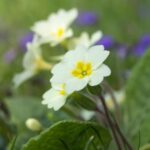Are you looking to create a stunning and sustainable garden that blooms year after year? Perennial garden layout designs offer a beautiful and low-maintenance solution for any outdoor space.
In this article, we will explore the many benefits of perennial gardens, provide tips for choosing the right plants, and offer insights on designing a layout that provides year-round interest. Whether you’re a seasoned gardener or just beginning, these ideas will help you create a perennial paradise in your own backyard.
Perennial gardens are a popular choice for many gardeners due to their ability to come back year after year with minimal maintenance. Unlike annual plants, perennials can survive the winter months and re-emerge in the spring, providing long-lasting beauty and structure to any garden landscape. By carefully selecting the right plants and arranging them in an appealing layout design, you can create a space that offers ever-changing color, texture, and interest throughout the seasons.
When it comes to creating your own perennial garden layout design, there are many factors to consider. From choosing the right plants to maintaining your garden over time, our article will guide you through the process step by step.
You’ll discover how to incorporate color and texture into your layout, learn from successful case studies, and gain insight into maintaining and caring for your perennial garden so it thrives for years to come. Join us as we delve into the world of perennial gardens and uncover the secrets of creating a beautiful and sustainable outdoor oasis.
Benefits of Perennial Garden Layout Designs
When it comes to designing a garden, there are many options to consider. One of the most popular and enduring choices is the perennial garden layout design. Perennial plants come back year after year, making them an attractive option for those looking for a low-maintenance and sustainable garden. There are numerous benefits to choosing a perennial garden layout design, including the ability to create a beautiful and vibrant garden that requires minimal effort to maintain.
First and foremost, one of the key benefits of perennial garden layout designs is their longevity. Unlike annual plants, which only last for one growing season, perennial plants can continue to thrive for many years with proper care. This means that once your perennial garden is established, you can enjoy its beauty year after year without constantly replanting or re-designing.
Another advantage of perennial garden layout designs is the potential for cost savings in the long run. While the initial investment may be higher due to the purchase of more mature perennial plants, they will continue to grow and spread over time, reducing the need for frequent plant replacements. This not only saves money on purchasing new plants but also reduces the time and effort required for maintenance.
In addition, perennial gardens are often seen as beneficial for the environment. These gardens promote biodiversity and provide habitats for various insects and wildlife. They also help with soil conservation by preventing erosion and improving soil structure over time. By choosing a well-designed perennial garden layout, you can create a beautiful landscape while also contributing positively to your local ecosystem.
Choosing the Right Perennial Plants for Your Garden
Understanding Your Garden’s Environment
Before selecting the perennial plants for your garden, it’s crucial to understand the environment in which they will be placed. Consider factors such as sunlight exposure, soil type, and climate. Certain perennials thrive in full sun, while others prefer shady areas. Similarly, some plants do well in well-drained soil, while others require moist or even waterlogged conditions. By understanding your garden’s environment, you can choose plants that are more likely to thrive and flourish.
Considering Size and Growth Habits
When choosing perennial plants for your garden layout design, it’s important to consider their mature size and growth habits. Some perennials spread rapidly through underground roots or seeds, which can lead to overcrowding and competition with other plants. Additionally, the height of the plants should be taken into account to ensure a balanced and visually appealing garden. Be sure to research each plant’s growth pattern and space requirements to avoid potential issues down the road.
Creating Color Schemes and Harmonious Combinations
One of the most exciting aspects of selecting perennial plants is creating a color scheme that complements your overall garden design. Consider incorporating a mix of colors that work well together, whether it’s through harmonious tones or bold contrasts.
Take note of flowering times as well to ensure a continuous display of colors throughout the growing season. It’s also essential to think about foliage texture and shape when planning your plant combinations for added visual interest in your perennial garden layout design.
Designing a Low-Maintenance Perennial Garden
Benefits of Low-Maintenance Gardens
Creating a low-maintenance perennial garden can be beneficial for many reasons. Not only does it save you time and effort in the long run, but it also reduces the need for constant upkeep and maintenance tasks. Low-maintenance gardens are designed to thrive with minimal intervention, making them perfect for individuals with busy schedules or those who simply want to enjoy their garden without the added stress of frequent care.
Choosing the Right Plants
When designing a low-maintenance perennial garden, it is important to select plants that require minimal attention and can withstand various weather conditions. Opt for hardy, drought-resistant perennials that are well-suited to your specific climate. Additionally, consider incorporating native plants as they are often more resilient and better adapted to local environmental factors.
Strategic Layout and Design
Incorporating strategic layout and design elements is essential for creating a low-maintenance perennial garden. Group plants with similar water and sunlight needs together to streamline watering and maintenance processes. Utilize mulch and ground cover plants to suppress weeds and retain moisture. Furthermore, consider adding hardscape features such as pathways or decorative rocks to minimize the amount of open soil that requires upkeep.
By implementing these strategies, you can create a beautiful perennial garden that requires minimal maintenance while still providing visual appeal and enjoyment throughout the seasons.
Creating Year-Round Interest in Your Perennial Garden
When designing a perennial garden layout, it’s important to consider how to create year-round interest. This means selecting plants that provide visual appeal in every season, not just when they are in bloom. One key element to achieving year-round interest is to include a variety of plant types, such as evergreen shrubs and trees, ornamental grasses, and plants with interesting bark or foliage.
In addition to plant selection, hardscaping elements can also contribute to year-round interest in your garden. Consider adding features such as decorative arbors, sculptures, or seating areas that will provide visual appeal even in the winter months when plants are dormant.
Another way to ensure year-round interest is to incorporate plants that flower at different times of the year. By carefully choosing a combination of early spring bloomers, summer flowering plants, and fall-blooming species, you can ensure that your garden has something of interest during every season.
| Plant Name | Main Feature |
|---|---|
| Lavender | Fragrant foliage and flowers; blooms in summer |
| Japanese Maple | Beautiful foliage that changes color throughout the seasons |
| Russian Sage | Long blooming period from late spring through fall; drought tolerant |
Key Elements of a Successful Perennial Garden Layout Design
When designing a perennial garden layout, there are several key elements that can help ensure its success. These elements are essential for creating a well-balanced and visually appealing garden that will thrive year after year. Here are some key elements to consider when planning your perennial garden layout:
1. Variety of plants: One of the most important elements of a successful perennial garden layout is the variety of plants. By incorporating a diverse selection of perennials, you can create visual interest and ensure that your garden remains attractive throughout the year. Consider including a mix of flowering plants, grasses, and foliage to add texture and color to your garden.
2. Proper placement: The placement of your perennial plants is crucial to the overall design of your garden. Be sure to consider each plant’s specific growing requirements, such as sunlight and soil conditions, when arranging them in your garden. Taller plants should be placed towards the back of the border, with shorter plants in front, to create a sense of depth and dimension in the garden.
3. Focal points: Every successful perennial garden layout design includes one or more focal points that draw the eye and anchor the overall design. This could be a large ornamental tree, a striking sculpture, or a well-placed bench or pathway. Focal points add visual interest and help guide visitors through the garden, making it an essential element in any perennial garden design.
By carefully considering these key elements when planning your perennial garden layout design, you can create a beautiful and thriving outdoor space that will bring joy for years to come. Whether you’re starting from scratch or revamping an existing garden, these elements will help guide you toward creating a stunning and sustainable perennial garden layout.
Tips for Incorporating Color and Texture in Your Perennial Garden
When it comes to designing a beautiful and successful perennial garden, incorporating color and texture is key. By carefully selecting plants with varying hues and foliage, you can create an eye-catching and dynamic garden that changes throughout the seasons.
One way to incorporate color into your perennial garden is by choosing a variety of flowers that bloom at different times of the year. This will ensure that your garden has continuous color and visual interest. Additionally, consider the foliage of the plants as well. Plants with unique or variegated leaves can add texture and dimension to your garden beds.
Another tip for adding color and texture to your perennial garden is to consider the height and structure of the plants. By mixing tall spires of flowers with low-growing ground covers, you can create a visually appealing layered effect in your garden. Be sure to also consider the overall shape and form of each plant when planning your layout.
Finally, don’t be afraid to experiment with different color combinations in your perennial garden. Pairing complementary or contrasting colors can create stunning visual effects that will make your garden stand out. Additionally, incorporating plants with interesting textures, such as fuzzy leaves or ornamental grasses, can add depth and visual appeal to your garden design.
| Tips for Incorporating Color | Texture in Your Perennial Garden |
|---|---|
| Choose plants with varying hues | Select plants with unique or variegated leaves |
| Consider the height and structure of plants | Experiment with different color combinations |
| Pair complementary or contrasting colors | Incorporate plants with interesting textures |
Case Studies
Perennial gardens are a beautiful and low-maintenance option for landscaping your outdoor space. When it comes to designing a perennial garden layout, there are various factors to consider in order to ensure a successful and visually appealing result. To gain inspiration and practical ideas for your own perennial garden, it can be beneficial to explore case studies of successful designs that highlight different approaches and techniques.
Notable examples of successful perennial garden layout designs include the following:
- English Cottage Garden: This design is characterized by its informal and abundant planting style, incorporating a diverse mix of perennials such as roses, delphiniums, foxgloves, and lavender. The use of pathways, trellises, and quaint decorative elements adds to the charm of this traditional garden style.
- Modern Minimalist Garden: Contrasting the English cottage garden, the modern minimalist approach focuses on clean lines, bold shapes, and a limited color palette. Planting pockets with low-maintenance perennials such as ornamental grasses, sedums, and coneflowers create visual interest in this contemporary design.
- Xeriscape Garden: Ideal for dry climates or water-conscious individuals, xeriscaping incorporates drought-tolerant perennials such as yarrow, penstemon, agastache, and ornamental grasses. This sustainable design emphasizes the use of native plants while minimizing water usage.
By studying successful case studies like these examples, you can gather inspiration for creating your own unique perennial garden layout that reflects your personal style and meets the specific needs of your outdoor space. Whether you prefer a lush cottage garden or a sleek modern design, there are countless options to explore when it comes to perennial garden layouts.
Maintaining and Caring for Your Perennial Garden
Now that you have designed and planted your perennial garden, it is important to establish a regular maintenance and care routine to ensure its health and longevity. Proper maintenance can help keep your garden looking beautiful year after year, and requires a combination of regular watering, fertilizing, pruning, and managing pests and diseases.
Watering is crucial for the health of your perennial garden. It is essential to monitor the soil moisture levels regularly, especially during hot and dry periods. Deep watering once a week is generally better than light watering every day as it encourages the plants to develop deeper roots. Applying a layer of organic mulch around your perennials can also help retain moisture in the soil and reduce the frequency of watering.
Fertilizing your perennial garden is necessary to provide essential nutrients for healthy growth and abundant blooms. You can use a balanced fertilizer in early spring or opt for organic alternatives such as compost or manure. Be sure to follow specific guidelines for each type of perennial plant, as some may have unique nutritional requirements.
Regularly inspecting your plants for signs of pests or diseases is also important in maintaining a healthy garden. Promptly addressing any issues that arise with appropriate organic or chemical treatments will help prevent them from spreading and causing further damage to your garden.
Conclusion
In conclusion, creating a beautiful perennial garden is not just about choosing the right plants, but also about creating a thoughtful and well-designed layout. By understanding the benefits of perennial garden layout designs and incorporating key elements such as color, texture, and year-round interest, you can achieve a stunning and low-maintenance garden that brings joy throughout the seasons.
When choosing the right perennial plants for your garden, it’s important to consider factors such as climate, soil type, and sun exposure. By carefully selecting plants that thrive in your specific conditions, you can ensure that your garden will be successful and sustainable for years to come.
Additionally, by studying case studies of successful perennial garden layout designs, you can gain inspiration and insight into how to apply design principles in your own garden. Whether you’re aiming for a formal design with structured borders or a more naturalistic approach with mixed plantings, there are endless possibilities for creating a beautiful and thriving perennial garden. With careful maintenance and care, your garden will continue to bring beauty and enjoyment year after year.
Frequently Asked Questions
How Do I Arrange Perennials in My Garden?
When arranging perennials in your garden, consider the height, color, and blooming times of each plant. Place taller perennials at the back of the bed and shorter ones towards the front to create depth.
Mix different colors and textures to create visual interest, and consider the blooming times to ensure that there are always flowers in bloom throughout the growing season.
What Is the Most Effective Garden Layout?
The most effective garden layout depends on several factors such as the size and shape of your garden, the climate, and the types of plants you want to grow. One popular and effective layout is the traditional row garden, which allows for easy access and maintenance.
Another effective layout is raised beds or container gardening, which are great for smaller spaces or areas with poor soil quality.
How Do You Layer Perennials?
Layering perennials involves placing them in a way that takes advantage of their different heights, textures, and colors. Start by placing taller perennials towards the back of the bed or border, then layer medium-height plants in front of them, followed by low-growing plants at the front.
This creates a visually appealing arrangement that allows all plants to be seen and appreciated. Additionally, consider layering based on foliage color and texture for added interest even when plants are not in bloom.

Welcome to my gardening blog! I am passionate about plants and enjoy sharing my knowledge and experiences with others. In this blog, I will write about everything related to gardening, from tips on how to get started to updates on my own garden projects.





